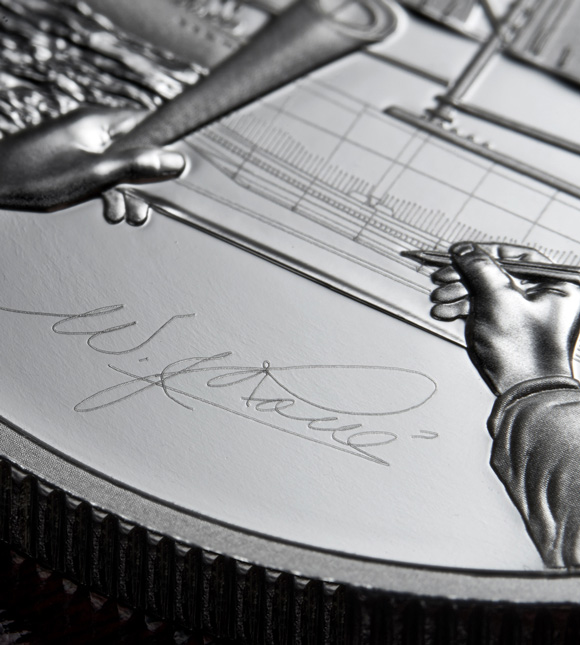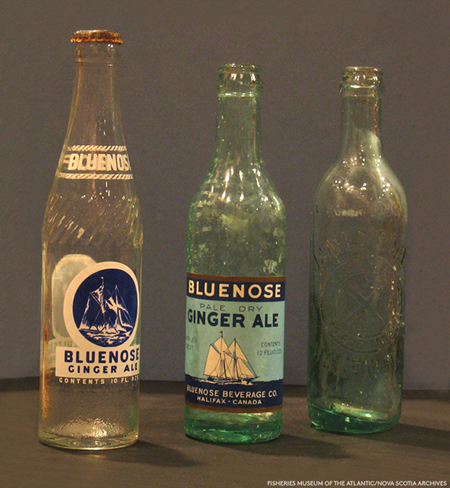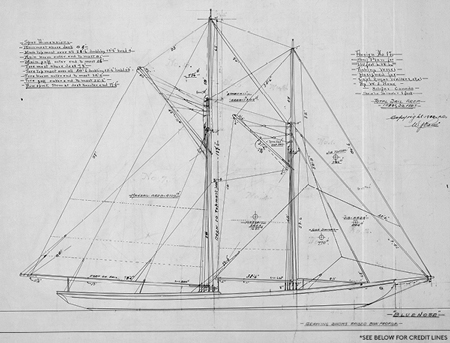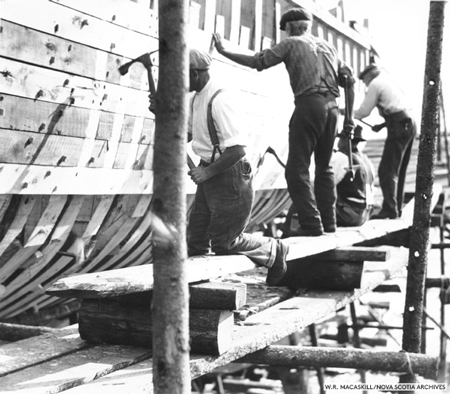William J. Roué: The vision behind Bluenose
- Jan 20, 2021
- History
- 6 minutes read


Every success story begins with an idea, and as seen on the 2021 Proof Dollar and Proof Set, that’s where our 2021 Bluenose centennial collection begins: with an idea born on a drafting table and from the mind of naval architect William James Roué (1879-1970).
Roué is the visionary who gave Bluenose the gift of elegance and speed by designing a workhorse that could – and would – outrace all others. His greatest legacy is etched onto the hearts and minds of Canadians, and our 10-cent coin too, where Bluenose sails on as a proud symbol of Canadian ingenuity and craftsmanship.
You might already know about Bluenose’s racing feats, but how much do you know about the ship’s architect?
In honour of Bluenose’s 100th anniversary, here are five things you may not know about William J. Roué:


He worked at his family’s soda factory while designing Bluenose
Dartmouth, N.S., was home for much of his life, but William “Bill” Roué was born in Halifax, N.S., His father, James Roué, was a pioneer of soft drinks in North America and the owner of Roué’s Carbonated Waters, Ltd., one of the early producers of Canadian ginger ale.
The second of three boys, Roué joined the family business in 1903 as a junior clerk. He continued to work full time even as the demand for his naval design skills increased, and he also developed an extra-dry ginger ale that he named Bluenose (it was a popular nickname for Nova Scotians well before the famous schooner).
Upon his father’s death in 1924, Roué became president of the family business, which he sold in 1929 to the Bluenose Beverage Company. He stayed on as a consultant until 1934, when naval architecture finally became a full-time pursuit.
He was a self-taught naval architect
Roué seemed to have been born with a passion for boats! As a young child, he started building toy boats before moving on to models; by the time he was in his teens, Roué was already building five-foot model yachts.
At 17, Roué left school and took night classes in mechanical drafting at the Victoria School of Art and Design (now the Nova Scotia College of Art and Design or NSCAD). Having joined the Royal Nova Scotia Yacht Squadron that same year, Roué continued to study everything he could about naval architecture.
Bluenose was his first fishing schooner
Although it remained a “side gig” for many years, Roué got his first real experience in naval architecture in 1907, when he was asked to draw up plans for a large sailing yacht. Launched in 1909, Babette was the first completed vessel designed by Roué, who went on to design several yachts for members of the Royal Nova Scotia Yacht Squadron.
In the fall of 1920, the Bluenose Schooner Company’s planning committee approached Roué about designing a schooner that was both a workhorse and a racer. At the time, local shipbuilders typically designed them using wooden half models, but a different approach seemed necessary after Canada’s entry in the first International Fishermen’s Trophy race was defeated.
Roué had no prior experience with designing a fishing schooner. But based on his reputation and previous designs, it seemed he could offer a more mathematical approach to ship design. Working at night, Roué drafted the blueprints for his vision of a winner and submitted them three weeks early. The committee asked him to reduce the length at the waterline, and his revised design came to be known as Roué Plan #17, or Bluenose.


Bluenose was built to his exact specifications
Smith and Rhuland Shipyards in Lunenburg, N.S., was awarded the contract to build Bluenose, though the idea of using a blueprint to build a schooner wasn’t exactly standard procedure at the time. Roué also insisted on personally ensuring that every aspect of the build was completed to his satisfaction.
The only change to Roué’s plans? More head room for the crew – a suggestion that came from Captain Angus Walters.


Roué went on to design 100+ more ships – including one of Bluenose’s rivals
Bluenose’s victory in the 1921 International Fishermen’s Trophy race brought Roué national acclaim, and his subsequent designs garnered international attention.
Roué was also approached by a group from Shelburne, N.S., and tasked with designing a potential challenger to Bluenose’s supremacy. The result: Haligonian, which met Bluenose in an elimination race in 1926. Haligonian was defeated in that race (ill-fitting sails may have been to blame) but it went on to beat Bluenose by nine minutes in a regional race.
A prolific naval architect whose career spanned a half-century, Roué continued to design all kinds of vessels, from yachts to ferries and tugs -- he even designed a sectional barge during the Second World War. But none could rival the magic and mystique of Bluenose, a made-in-Canada success story that earned its builder a place of honour in Canada’s Sports Hall of Fame and the Nova Scotia Hall of Fame – and on our 2021 Proof Dollar.
Work Cited
Bluenose: A Canadian Icon, Nova Scotia Archives, www.archives.novascotia.ca/bluenose/results/?Search=&SearchList1=3.
“William J. Roué (1879-1970): Biography.” WJRoué.ca. www.wjroue.ca.
Roué, Joan. A Spirit Deep Within: Naval Architect W.J. Roué and the Bluenose Story. Vanwell Publishing Ltd, New Edition, 2002.
“Bluenose: A Dartmouth Connection.” Dartmouth Heritage Museum, 23 March 2017, www.dartmouthheritagemuseum.ns.ca/bluenose-a-dartmouth-connection/
“Hall of Famer: William J. Roué.” Canada’s Sports Hall of Fame. sportshall.ca/hall-of-famers/hall-of-famers-search.html?proID=422&lang=EN
“Inductee: William James Roue.” Nova Scotia Sport Hall of Fame. nsshf.com/inductee/william-james-roue/
Image credits
William James Roué Signature © jeroué. Used with permission.
Blueprints of 1921 BLUENOSE © jeroué. Used with permission.
‘Bluenose’ is an official mark adopted and used by the Nova Scotia Department of Communities, Culture and Heritage pursuant to the Trade-marks Act (Canada). It is used by the Royal Canadian Mint with the Department’s permission.





